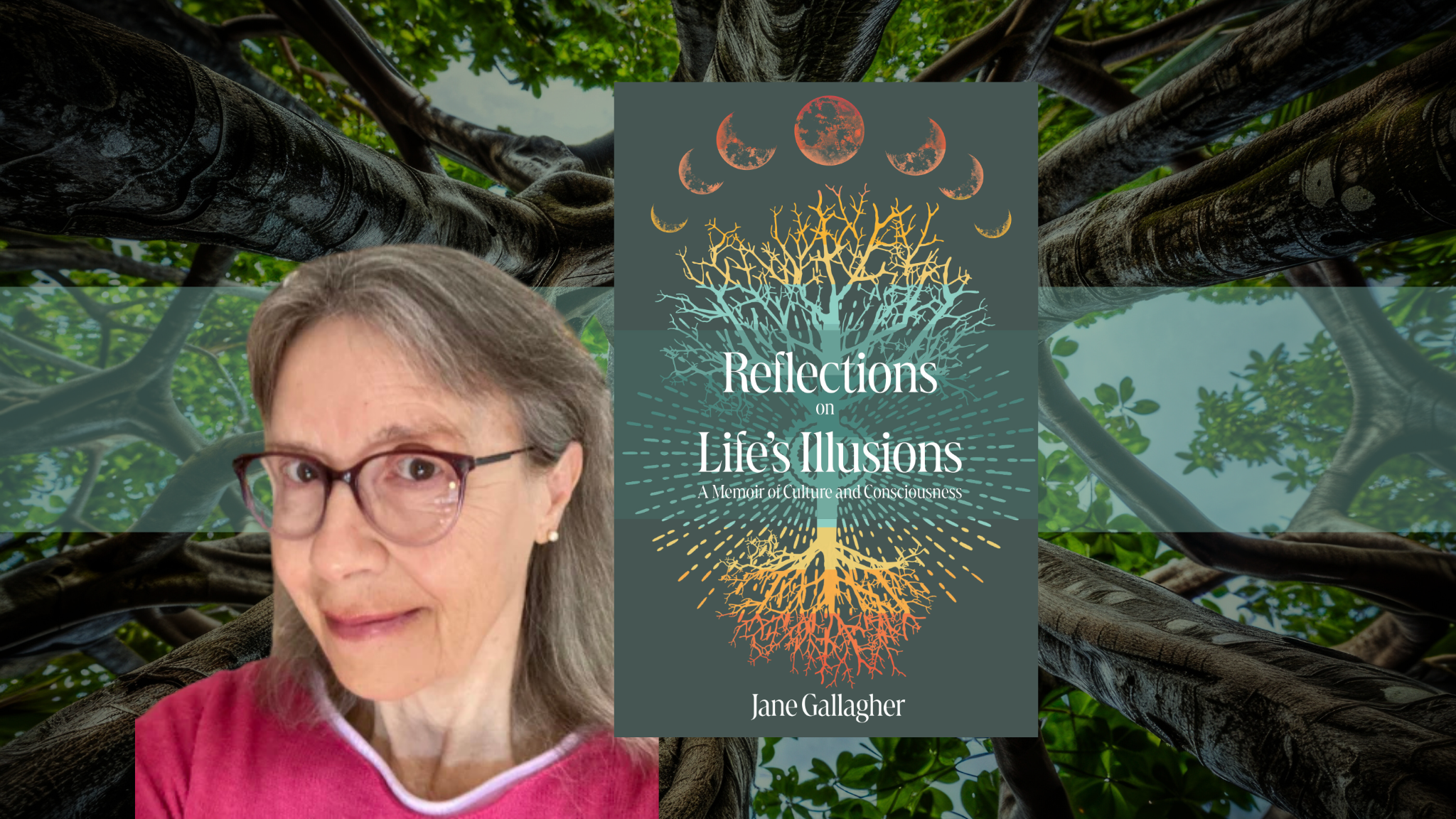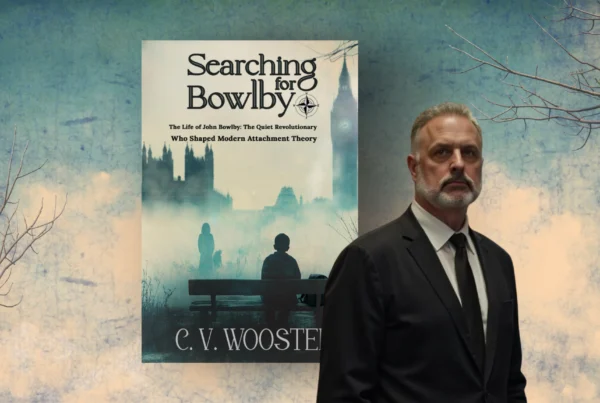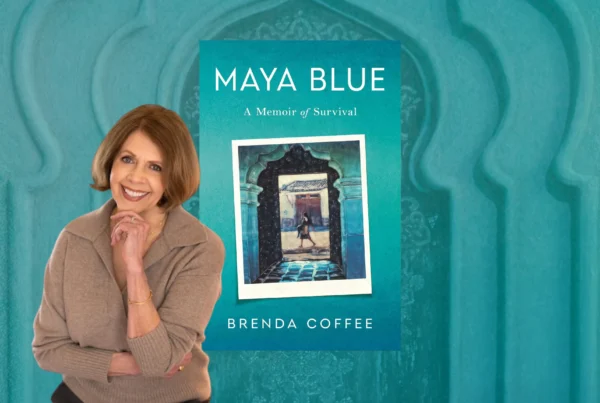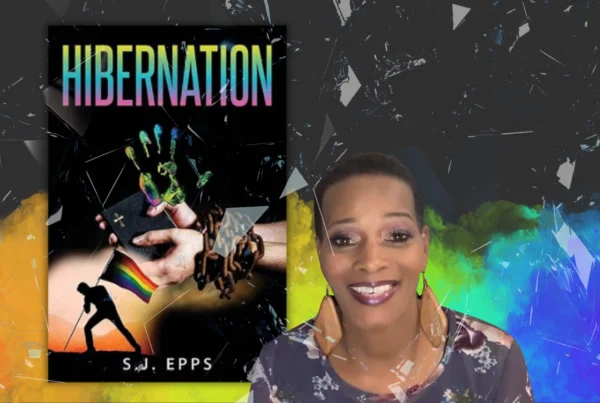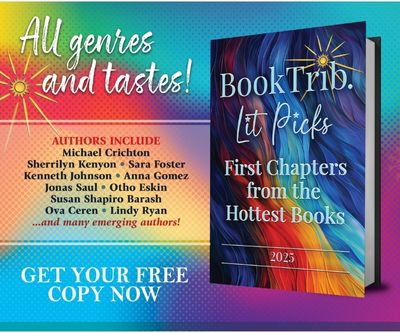Some books explain, and some books invite you to experience. Reflections on Life’s Illusions is the latter—a luminous exploration of how nature, movement, and reflection converge into a philosophy of wholeness. For Jane Gallagher, spirituality is not a belief system but a felt relationship: between science and mystery, self and world, thought and body.
In this Q&A, author Jane Gallagher reflects on the lifelong dialogue between science and spirit, the stories of her foremothers, and the art of letting go—learning to see the world not as separate parts, but as one living, breathing whole.
- You often describe the natural world—trees, wind, birds—as emotional teachers. How has that lifelong dialogue with nature informed your sense of spirituality?
Like many people, I’m happiest in beautiful natural environments with people I love. As a beneficiary of historically rooted white privilege in the U.S., I had many such experiences as a child. Hours of daily play in a grassy, treelined neighborhood and hiking, swimming, sledding, skating and camping with my family whenever we were free meant that nature, in all its wondrous variety, was front and center in my deepest experiences of love and joy. Forests, seashores, mountains and meadows grew into more than just backdrops to experience as I came of age. They came alive in my heart and subconscious mind as something deeper, like mysterious, wise companions I could turn to for comfort and a kind of physically transmitted advice in times of difficulty, growing deep roots to the source of a love of life and the mysterious wisdom and solace many call God.
- Your grandmothers’ and great-aunt’s stories reveal women pushing against early 20th-century gender expectations. How did their resilience shape your feminist consciousness?
It’s hard to say how the stories of my foremothers informed my consciousness, except to note the pride they inspired. However, my parents must have raised their three daughters with them in mind. We were taught we could achieve whatever we put our minds to with energy and discipline, giving us enough confidence to stand up, brush ourselves off and face painful difficulties when life inevitably knocked us down. As the oldest, I was also expected to lead by example and care for my younger siblings and playmates on rare occasions when parents were unavailable. It came as a shock in middle school when I discovered that my conditioned assumptions about fair play and equal access to opportunity for everyone, including women and people of color, were not actually how the world worked, inspiring a rebellious curiosity about what constitutes power and how social systems are constructed and reformed.
- You write of expressing understanding “through movement—such as dance—before words.” How do physical experience and artistic embodiment shape your intellectual life?
From the time I was a wiggly child who couldn’t sit still, even at the dinner table, unconsciously swinging my legs underneath, much to my mother’s chagrin, I’ve preferred movement over stillness, except when letting go into sleep after a long day. Several challenging experiences in my twenties taught me that imagining the mind and body as separate and valuing long periods of study over physical activities, like running and dancing, led to self-destructive behavior for me. As a natural athlete and dancer, the realization finally dawned that my body was not just a vehicle to transport my brain around. Instead, it was my primary source of learning and understanding. When I paid attention to its prompts and honed its energy and flexibility, thinking sharpened, ideas ignited, synthesized and finally rose into words in a kind of knowing connected with the experience of the movement itself.
- Throughout the book, you integrate scientific research—from neuroscience to environmental studies—with personal reflection. How do you view the relationship between science and spirituality?
As one who understands life primarily through physical experience, learning about how the body works is of particular interest. Scientific discoveries over the course of my lifetime have provided immense amounts of knowledge about that, mirroring a spiritual truth that mystics across history have intuited: our bodies are not, nor is anything else, separate and solid. Instead, we are like waves in an ocean of living relationships, a concept so wondrous that it’s hard to wrap the mind around it. Science tells us about the mechanics of how that works. Contemplative prayer and meditation tell us about the inner experience it mysteriously produces in the psyche, often translated as soul or spirit. Those two ways of knowing are utterly interdependent. The writing practice that produced Reflections on Life’s Illusions was an exploration of how that understanding emerged for me, shaping my perspective on what it means to be alive.
- The introduction describes this work as an “experiment in letting the story write itself.” What surprised you most about that creative process?
A continuing fascination with the process of letting the story write itself is fueled by getting myself out of the way of the writing, which requires letting go of attachment to a particular result. The more I can do that, the more inspiration, joy and creative ideas reveal themselves. Showing up every morning to write, after waking up while reading with my morning tea, is discipline. Following the energy of inspiration when it starts to pop, by moving to my laptop to let the words flow, is play. That process has become a spiritual practice that seems to weave my days together somehow. I find it so mysterious that this kind of writing somehow comes through me, rather than from me, and only when I let go of expectations about the outcome. Paying close attention to the energetic quality sparked by these natural daily rhythms is key.
- After seven years of writing and reflection, what illusions of life—personal or societal—have you most clearly seen through?
It’s become increasingly clear that human life is not separate from anything else. Seeing through the illusion of separateness completely contradicts the traditional Western cultural message that controlling the wild chaos of nature is necessary for survival and fighting for personal power in competitive arenas of rugged, self-reliant individualists is unavoidable. Seeing through that delusion makes it easier to notice that human life and love are resilient whenever and wherever they connect, even under the worst conditions. Like ourselves, they are ever-changing mysteries born of a relationship with everything around and within them. The more I’ve let go of conditioned ego identities into deeper faith in the mystery of life itself, the more persistent my joy and empathy have become and the more patience I’ve gained to wisely meet life’s inevitable pain, fostering a stronger sense of resilience and peaceful relationship to life’s ups and downs, beginnings and endings.
About Jane Gallagher:
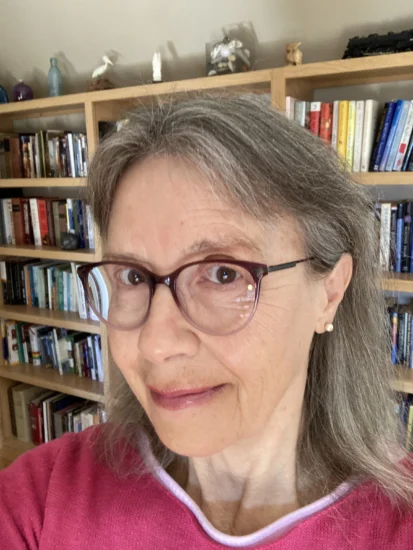 Jane Gallagher lives with her husband in the green woodlands of Vermont’s mountains where she writes. She retired in 2016 from nonprofit development consulting to New England’s nonprofit organizations working to address social and environmental injustice at the local, state and regional levels. A mother of two and grandmother of three, she holds a B.A. in Political Science and International Relations from Carleton College in Minnesota and an M.A. in Urban and Environmental Policy from Tufts University in Massachusetts.
Jane Gallagher lives with her husband in the green woodlands of Vermont’s mountains where she writes. She retired in 2016 from nonprofit development consulting to New England’s nonprofit organizations working to address social and environmental injustice at the local, state and regional levels. A mother of two and grandmother of three, she holds a B.A. in Political Science and International Relations from Carleton College in Minnesota and an M.A. in Urban and Environmental Policy from Tufts University in Massachusetts.
